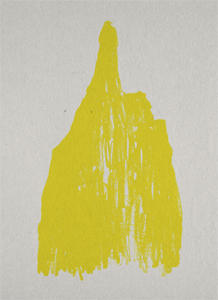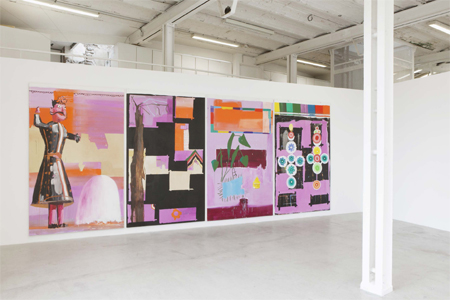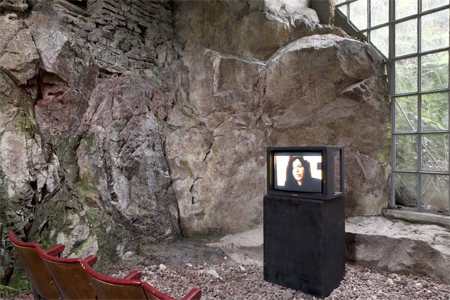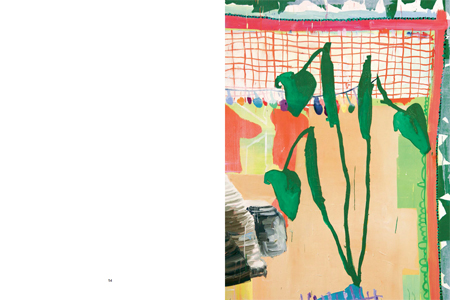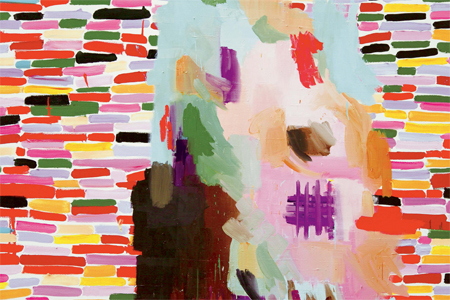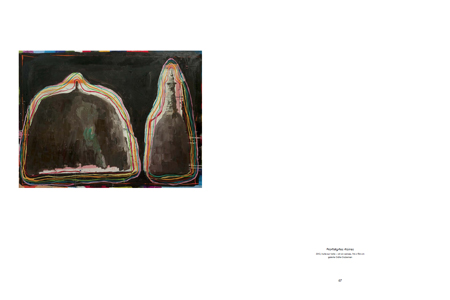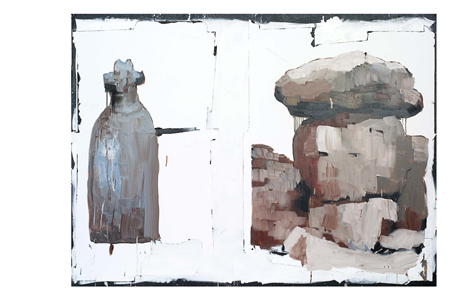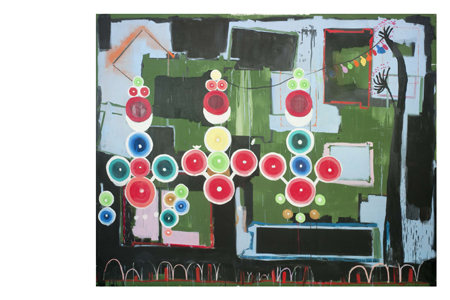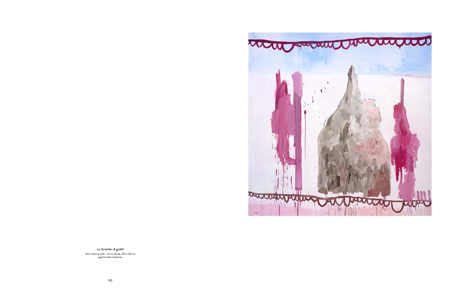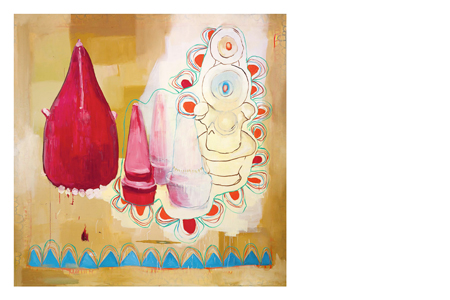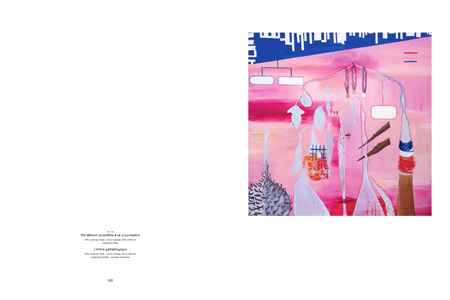First monograph.
A small number of objects recur with a certain emphasis in Reymond's
canvases.
On the one hand, there are what we might call the “features
of childhood”. These are sometimes objects: so the Pinocchio in
the yellow polyptych. More often, the reference tallies
with a way of doing things. Reminiscences of childish drawings, a
Christmas tree with branches upturned at their tips, vague succulents
with flared leaves, expanses of water and pieces of meadow covered
with a wire fence that may be a barrier; and then these decorative
edges, the re-used straight lines of small curls, writing exercises for
day nursery classes, embryos of decorative frames and, depending
on the case, terrestrial bases or snatches of sky, in a graphic language
which is, or might be, puerile.
On the other hand, suggestions coming from one or more
geographical elsewheres inform these paintings. Asia frequently,
Africa a little less often, and a site in eastern Europe, all overlap
and mingle. No desire for strangeness, in all this, and a personal
experience reduced to a powerful visual and auditory memory,
one of colourful, noisy festivals in India. More the result of an
anxiety, traces of which are revealed in conversations you may
have with the artist. What do we actually see in the pictures?
A pyramidal form recurs regularly. At times it is a mountain: it
has the hue and texture of earth. The mountain may assume the
colour of butter: one thinks of those mounds of fat, offerings
to the deity or deities in Buddhist and Hindu temples. In the old
days, stones were piled on top of each other: one thinks of those
arrangements of pebbles—cairns—built by walkers to honour
mountain spirits. More often, the bottom of mountains, mounds
and cairns is flared to form a kind of bowl. One recognizes a
temple, a gigantic stupa or miniature replica and new offering.
It may also happen that the pyramidal construction is a granary:
the grain storeroom in countries south of the Sahara. In several
pictures, these mountains, temples and granaries are decorated
with upright stems, unadmitted suggestions of the cross, or series
of pennants.” Prayer flags. In all cases, whatever it may be or seem
to represent, the pyramidal form is asserted in Reymond's work
as precious and full of meaning: the casket of the deity or of what
makes it possible to maintain life, or the meaning of life. A kind of
abode?
Nadeije Laneyrie-Dagen
Born 1971 in Lyon, Florence Reymond lives and works in Paris.
Texts by Frédéric Bouglé, Nadeije Laneyrie-Dagen,
Guillaume Lasserre, Natascha Cucheval.
Film directed by Damien Faure.
published in March 2014
bilingual edition (English / French)
24 x 32 cm (hardcover)
128 pages (color ill.) / DVD 51'
ISBN : 978-2-35864-057-2
EAN : 9782358640572
in stock

